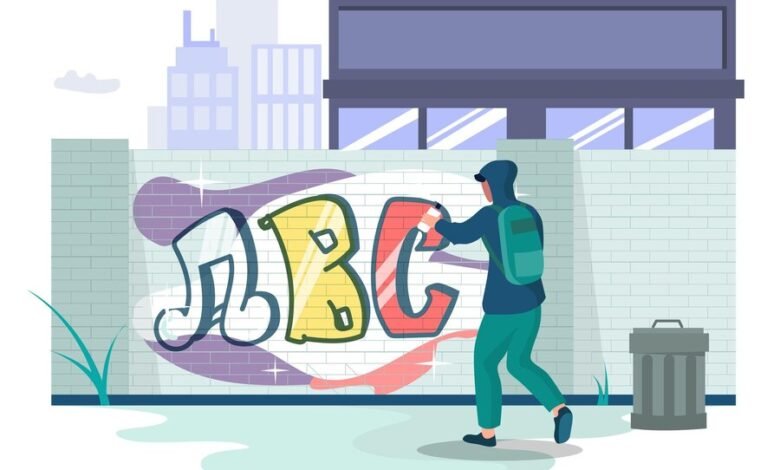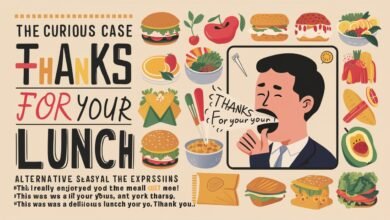
Graffiti art has exploded in popularity over the past few decades, moving from the shadows of urban alleyways into the bright lights of galleries and social media feeds. With its raw energy and boundless creativity, graffiti has captured the imagination of thousands of artists and enthusiasts worldwide. If you’ve been fascinated by this vibrant form of expression and want to learn how to draw graffiti alphabet letters, you’re in the right place. This blog will guide you through five easy steps to creating your own unique graffiti alphabet, perfect for beginners and seasoned artists alike.
Introduction to Graffiti Art and its Popularity
Graffiti art is no longer just a subculture of rebellious street artists. It has become a respected form of artistic expression celebrated worldwide. From murals that brighten up cityscapes to personalized tags that reveal the artist’s identity, graffiti has a unique way of telling stories. Its popularity has surged, thanks to social media platforms that allow artists to share their work with global audiences instantly.
For many, graffiti is a way to leave a personal mark, an artistic signature that stands out in the hustle and bustle of urban life. This blog focuses specifically on graffiti alphabet letters – an essential skill for any graffiti artist. Whether you’re looking to create striking wall art or embellish your personal projects, mastering the graffiti alphabet is the first step.
Brief History of Graffiti Alphabet Letters
The history of graffiti art is as colorful as the murals themselves. Rooted in the rebellious spirit of the 1960s and 70s, graffiti began as a way for marginalized voices to be heard. It started with simple tags or signatures, which evolved into more complex designs, incorporating vibrant colors and intricate lettering styles.
Graffiti alphabet letters became a fundamental element of this art form, allowing artists to communicate messages, represent their names, and establish their unique styles. Over the years, these letters have evolved, influenced by cultural trends, regional styles, and individual creativity. Today, graffiti alphabets range from bubble letters to wildstyle, each with its own flair and complexity.
5-Step Tutorial on Drawing Your Own Graffiti Alphabet Letters
Step 1: Sketching the Outline
Every masterpiece begins with a sketch. Start by lightly drawing the basic shapes of each letter you want to create. Use simple lines and geometric shapes like rectangles, circles, and triangles to form the skeleton of your letters. Don’t worry about perfection at this stage; the goal is to get a rough idea of your overall design.
Having a strong outline is crucial because it sets the foundation for the rest of your artwork. Once you’re satisfied with the arrangement and shapes, you can start refining the lines, making them bolder and more defined. Keep your strokes light and easy to erase, as you’ll likely make adjustments along the way.
Step 2: Adding Dimension and Depth
Adding depth is what transforms flat letters into eye-catching graffiti art. To achieve this, think about where your light source is coming from. This will determine where the shadows and highlights fall. Use lines to create a 3D effect, making the letters pop off the surface.
One common technique is to add parallel lines that extend from one side of each letter. These lines should be consistent in direction and length to maintain a uniform look. You can then connect these lines to the original outline, forming the sides of your 3D letters. Don’t forget to add shadows to enhance the illusion of depth.
Step 3: Choosing Your Fonts and Styles
Graffiti is all about style, and choosing the right fonts can make your artwork stand out. There are several popular graffiti styles to consider, such as bubble letters, wildstyle, and block letters. Each style has its own unique characteristics and level of complexity.
Experiment with different fonts to see which ones resonate with your artistic vision. You can mix and match styles within your alphabet to create a more dynamic and visually interesting piece. Remember, the key is to make your letters cohesive while still allowing each one to showcase its individuality.
Step 4: Using Colors and Shading Techniques
Color brings graffiti to life. Start by selecting a color palette that complements your design. Bold, contrasting colors often work well in graffiti, making the letters stand out against the background.
Once you’ve chosen your colors, apply them to your letters using markers, spray paint, or digital tools. Use shading techniques to add depth and dimension. Gradients, highlights, and shadows can make your letters look more realistic and three-dimensional. Blending colors smoothly can also enhance the overall aesthetic of your piece.
Step 5: Adding Personal Touches and Enhancements
This is where you can truly make your graffiti alphabet letters unique. Add personal touches such as patterns, textures, and additional elements like stars, arrows, and drips. These enhancements can give your work a distinct personality and make it easily recognizable as your own.
Don’t be afraid to experiment with different effects and embellishments. The beauty of graffiti lies in its freedom and creativity. Trust your instincts and have fun with the process. Your personal style will evolve and become more refined with practice.

Tips for Beginners and Common Mistakes to Avoid
Starting with graffiti can be intimidating, but these tips can help you avoid common pitfalls. First, always plan your design. Improvisation is essential to graffiti, but a well-thought-out plan can be a lifesaver. Second, practice your sketches before going for the final piece. Familiarity with your letter forms will make the final execution smoother.
Avoid overcrowding your design. Negative space is just as important as the filled areas, giving your letters room to breathe. Lastly, don’t get discouraged by mistakes. Every artist, no matter how experienced, makes errors. The key is to learn from them and keep improving.
Showcase of Famous Graffiti Artists and Their Alphabet Letter Works
To inspire your own creations, look at the works of renowned graffiti artists who have mastered the art of the alphabet. Artists like Banksy, known for his impactful and often politically charged pieces, or Shepard Fairey, whose bold typographic works have become iconic, offer endless inspiration.
Take note of their unique styles and how they manipulate letters to convey powerful messages. Studying their techniques can provide valuable insights and spur your own creativity.
Conclusion and Encouragement for Creativity in Graffiti Art
Graffiti art is a vibrant and dynamic form of expression that anyone can enjoy. By following the steps outlined in this blog, you’ll be well on your way to creating your own stunning graffiti alphabet letters. Remember, the most important things are to practice, experiment, and have fun.
Graffiti offers a unique way to express yourself and connect with others. Don’t be afraid to push boundaries and explore new styles. Your creativity is your greatest tool, so use it to leave your mark on the world.
Resources and Tools for Further Learning and Practice
To further hone your skills, consider exploring online tutorials, joining graffiti art communities, and investing in quality tools. Websites like Graffiti Empire and YouTube channels dedicated to street art offer a wealth of resources. Books by famous graffiti artists can also provide deeper insights into techniques and styles.
Practice regularly, and don’t hesitate to seek feedback from other artists. The graffiti community is incredibly supportive and can offer valuable advice and encouragement.
By mastering these techniques and continually pushing your creative boundaries, you’ll soon develop a unique style that sets your work apart. Happy creating!



